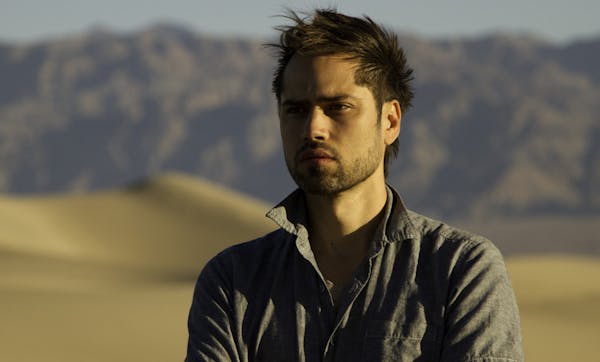When he agreed in 2013 to return as head of the St. Paul Chamber Orchestra, Bruce Coppock had a checklist.
First: Get the ensemble back on track financially and artistically after a damaging six-month lockout. Bring in new players and artistic partners. Usher the ensemble into a new, state-of-the-art concert hall. Achieve a new labor contract. And finally, come up with a plan to replace himself.
His to-do list complete, Coppock will retire in January. The SPCO announced Wednesday that Coppock will be replaced by a new team that represents both a shift to a more traditional dual-leadership model and a radical change.
Violinist Kyu-Young Kim, who has served as senior artistic adviser for the past two years, will become artistic director — the first time a player has been chosen to become the chief artistic officer of a major U.S. orchestra. Generally, that role is performed by a conductor.
Jon Limbacher, head of development at the Cleveland Orchestra and a former SPCO executive, will become president and managing director.
Violinist Daria Adams said musicians are excited about the new leadership, particularly the ascent of one of their own.
"We're stepping into new territory here," said Adams. "We have been slowly moving toward being more musician-led, and having someone who plans what we do on stage who knows what we do on stage makes a difference."
Rising star and veteran exec
Kim has been a rising star at the SPCO. During the six-month lockout that ended in April 2013, he had accepted a position with the New York Philharmonic.
He was persuaded to return to St. Paul and become a senior artistic adviser, while still occupying the principal second violinist chair. He will continue to play with the ensemble.
"It's exciting that the SPCO would make this kind of a leap," Kim said. "Whenever we're thinking outside the box, that's when we tend to succeed and thrive, and this fits with this idea that we are at the heart of it a collaborative organization."
Kim will continue many of his current duties but will also pick up from Coppock's portfolio the responsibility for recording, commissioning, touring, and recruitment of artistic partners. He will report to the board of directors.
"Since 2002, the president has been the animating force behind the artistic development of the SPCO," Coppock said. "This will return us to a traditional model, but Kyu will make this very different."
In Limbacher, the SPCO gains an executive with national experience and local knowledge; he served as SPCO vice president and chief operating officer from 2000 to 2012.
Limbacher spearheaded the orchestra's vision for attracting audience and donors.
It lowered ticket prices, instituted a $5 per month membership program and expanded performances in neighborhood and suburban venues. The program is credited with increasing attendance.
"Kyu and I will continue to focus on the development of artistic excellence in the ensemble," Limbacher said in an interview. "That, and figuring out ways for the SPCO to add value. Orchestra leaders are waking up every day asking the question of how they can add value to the community."
Bouncing back from lockout
Often overshadowed by the Minnesota Orchestra, the SPCO has recovered well from the lockout, which ended with an agreement that exacted heavy cuts in musicians' salaries and reduced the orchestra's permanent roster to a maximum of 28 musicians, from 34. There are currently 21 permanent players and another five who are on contract for 2015-16.
The company has added three well-regarded international musicians — pianist Jeremy Denk, violinist Patricia Kopatchinskaja and clarinetist Martin Fröst — as artistic partners who play regular programs through the year.
Audiences have greeted the new 1,100-seat Ordway Concert Hall enthusiastically. Coppock said attendance hit a zenith in 2014 and has maintained that level with capacities near 95 percent. Adams noted that an upcoming series featuring Kopatchinskaja had to add a performance to satisfy demand.
"It feels like with each passing week that we're moving farther and farther away" from the wounds of the lockout, Kim said.
For example, the contract that settled the lockout took a bigger bite from musicians on the lower end of the pay scale. In the recent contract extension, Adams said that principal players — who are paid higher salaries — pushed the idea that lower-paid musicians get bigger bumps in pay.
Coppock led the SPCO from 1999 to 2008, when he left to deal with health issues. He recovered from bile duct cancer enough so that he could head the Cleveland Orchestra's Miami residency. He said his health was not a factor in stepping down.
"I'm going to be 65 in a few months," he said. "I really wanted to get these things done and get these two guys in place. They can lead the organization for the next 10 to 15 years and get to the next level."
The SPCO, in its 57th season, is the only full-time professional chamber orchestra in the United States. Annual attendance is about 120,000 and the budget is approximately $9.5 million.
Graydon Royce • 612-673-7299

